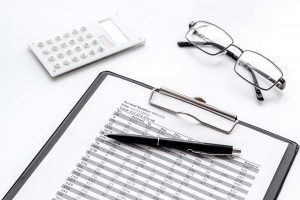What are Plant Assets? Definition Meaning Example

It is also called a fixed-installment method, as equal amounts of depreciation are charged every year over the useful life of an asset. Monte Garments is a factory that manufactures different types of readymade garments. The company also has a printing press for printing customized merchandise with brand designs. A new press technology has just launched a characteristic of a plant asset is that it is in the market, and the company owner decided to acquire the machine.
- Even the smallest business has assets, which can include everything from cash in the bank, to the computer you’re working on, to the building where you manufacture piggy banks.
- It’s crucial to recognize which of your assets are plant assets, regardless of their worth.
- Plant assets, also known as property, plant, and equipment (PP&E), are tangible assets with a useful life of more than one year.
- If required, the business or the asset owner has to book the impairment loss.
- From an accounting perspective, plant assets are typically held on the balance sheet at historical cost (what the company paid for them) less depreciation (ongoing wear-and-tear expense) over time.
- Here’s a rundown of the different types of assets a business can possess, and the type of assets that are considered to be plant assets.
Plant assets: the bottom line

In this article, we will talk about non-current tangible assets and, specifically the plant assets. The article will be all about plant assets, their recognition, depreciation, and differentiation from other asset classes. Let us try to understand the difference between plant assets characteristics and current assets. In actual practice, it is not only difficult but impractical to identify how much of the plant assets have actually been used to produce business revenue. Hence, we will calculate depreciation proportionately based on the useful lives of the plant assets.
What are intangible assets?
Needless to say, they’re an enormously important part of producing goods and/or services in an economically efficient manner. Businesses must be especially careful in making these investments since buildings and land are immovable and can’t be easily substituted. Any costs incurred after the initial https://www.bookstime.com/ purchase that enhance the asset’s future economic benefits are capitalised onto the balance sheet. The last entry would be posted every year for the next 30 years, resulting in nil value at the end of the useful life. Plant assets fall under the fixed asset category and can be used in the business for more than one year. They are used for manufacturing and selling the goods and services of the company.

Characteristics of Plant Assets
- Later on, the company will charge the depreciation according to the method of depreciation it usually follows.
- Here, we’ll discuss what plant assets are, why they matter, and how they fit into a company’s financial circumstances.
- Therefore, the first few years of the assets are charged to higher depreciation expenses.
- Current assets typically include cash, inventory, accounts receivable, and other short-term liquid assets.
Depreciation expense — calculated in several different ways — is then carried through to the income statement and reduces net income. Over time, plant asset values are also reduced by depreciation on the balance sheet. https://x.com/BooksTimeInc To be classified under the category of this kind of asset, it should be of tangible nature, which means that it should have the feature of being seen or touched. The next plant assets characteristics is that it should be able to provide benefit to the business for more than one year.
What characteristics do plant assets have in common?
Named during the industrial revolution, plant assets are no longer limited to factory or manufacturing equipment but also include any asset used in revenue production. These assets are significant for any business entity because they’re necessary for running operations. Besides, there is a heavy investment involved to acquire the plant assets for any business entity. The company’s top management regularly monitors the plant assets to assess any deviations, discrepancies, or control requirements to avoid misuse of the plant assets and increase the utility. Depreciation is the process by which a plant asset experiences wear and tear over a particular period of time.

Plant assets represent the asset class that belongs to the non-current, tangible assets. These assets are used for operating the business functions and generating revenues in the financial periods. The IAS 16 of the IFRS governs the rules regarding recognizing and recording the plant assets in the company’s financial statements. Instead, a part of the cost is periodically charged to the expense account to depreciation the plant assets.
- Plant assets are different from other non-current assets due to tangibility and prolonged economic benefits.
- Plant assets are a specific type of asset on a company’s balance sheet.
- Plant assets are key to a company’s production process and are often considered among the most valuable items on the balance sheet.
- Naturally, the initial purchase of the plant asset would be an outflow of cash, any subsequent sales would be a cash inflow.
- Every business concern or organization needs resources to operate the business functions.
Making continual improvements and continuously reviewing the quality of assets is an important part of keeping a company healthy. Improvements should be done on a regular basis or when a scenario necessitates intervention to extend the life of assets and avoid future issues with their capacity to serve a business. Improvement for one company will very certainly differ dramatically from that of another.

Laisser un commentaire